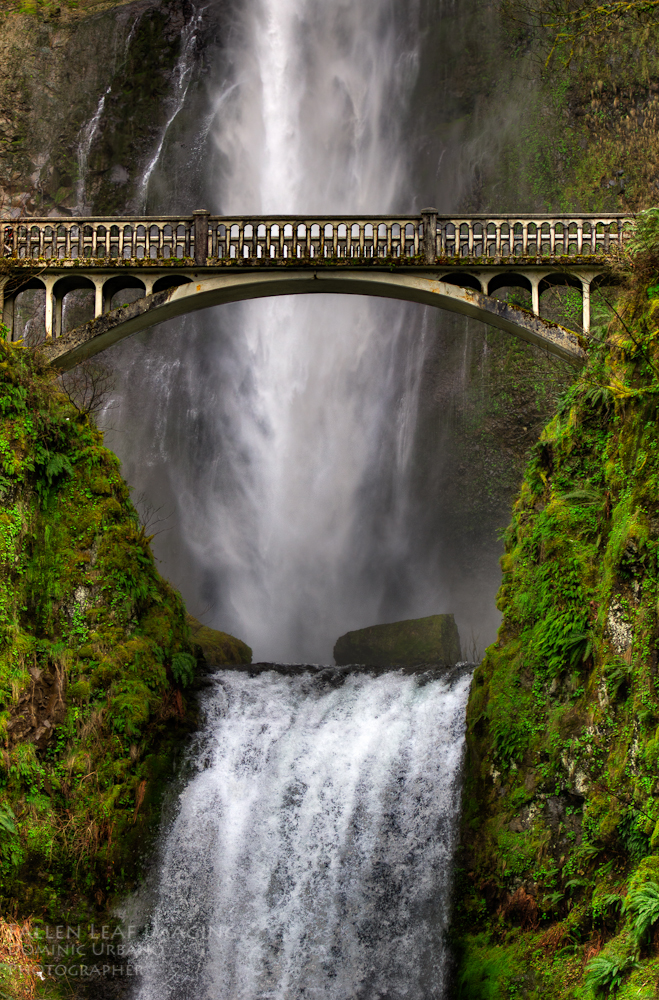Creating a fine art image of Multnomah Falls on a crowded day.
One of the difficulties that can come with photographing iconic locations such as the Multnomah Falls in the Columbia Gorge is that they are invariably crowded with people. The Columbia Gorge has many beautiful waterfalls and Multnomah Falls is one of the most easily accessible which adds to the congestion. The crowds of people can get in the way of capturing an image that is free of this distraction. If desired, there are ways to work around the people to eliminate them from your landscape photos. Such was the case when I created this image of Multnomah Falls on a busy afternoon.

The easiest way to avoid having people in your landscape shot is to visit the location when people are not there. An early morning in the off-season is when you are most likely to have an iconic location to yourself, but it is not always possible to arrange that sort of timing. That was the case when I recently drove through the Columbia Gorge and stopped in at Multnomah Falls in the middle of a busy afternoon. I had an appointment in Portland OR, and photographing the falls was not the purpose of the trip. So like any other tourist I pulled off the freeway and worked with the light and crowds that happened to be there at that moment. So the question remains. How to get the shot you want despite the crowds?
The first option short of visiting the place when it is free of people is to crop them out. This was how I managed this shot of Multnomah Falls. The area was full of people and I had moved up the path a bit to explore different angles. If I had used a wide-angle lens from this vantage point I would have had a foreground full of people standing on the observation platform. I switched to a telephoto zoom (in this case my 70-200 2.8) and shot right over the top of their heads. The bridge in the photo was also full of people… so that required a bit of patience and luck. I set up my shot and then waited for a moment when the bridge was clear of people before clicking the shutter.
Another option is to use extremely long exposures so that the moving people ‘ghost’ away. You will usually need at least 10-15 seconds with the shutter open to have them begin to disappear from the final image. Low ISO settings, neutral density filters, a sturdy tripod, and some patience are needed to use this technique. It is also a technique that works best when the intended subject is rock solid and not moving. Great for buildings or scenes such as the rock arches in Utah, but not so great for a place like Multnomah Falls where virtually everything in the image is moving. (The water… trees… ferns…)
Including people in your shot is always an option and sometimes it can enhance the image by adding some perspective. A person standing at the base of a waterfall can give the viewer some sense of how large it is. The difficulty of including a person in the image is that now you have to expose and focus for the person first, rather than the landscape. Even a person who is working with you and holding very still usually needs about a 1/60th sec. exposure or faster to remain sharp in the final image. Landscape exposures, usually use low ISO settings, and are often much longer than 1/60th. There are infinite variables that can change these settings and how a person is included in a landscape shot, but since this article is about eliminating people from the shot… I’ll leave it at that.
Landscape photographers often plan the timing of their visits to iconic locations months in advance. Doing everything they can to increase the odds that they will be able to capture an ‘ideal’ image of the place. However, as with my stop at Multnomah Falls, we also have to be opportunistic and shoot under less than ideal conditions.